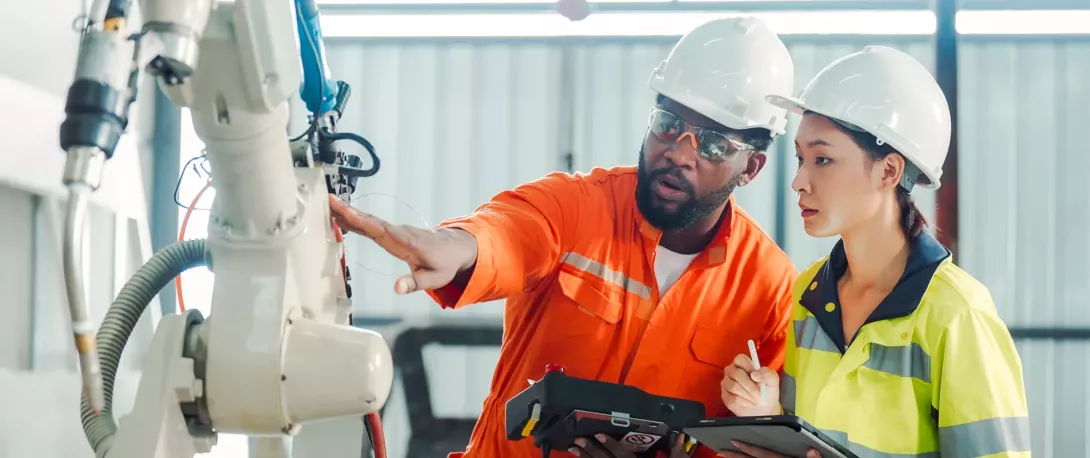
A new ILO report unveils opportunities and risks ahead of World Day for Safety and Health at Work.
GENEVA (ILO News) – A new report from the International Labour Organization (ILO) explores how artificial intelligence (AI), digitalization, robotics and automation are reshaping occupational safety and health (OSH) in workplaces worldwide.
The report, titled Revolutionizing Health and Safety: The Role of AI and Digitalization at Work, highlights how these emerging technologies are improving worker health and well-being while underscoring the need for proactive policies to address new risks.
By taking on hazardous tasks, assisting in surgeries, and optimizing logistics, robots help reduce risks and improve efficiency. AI-powered systems enhance safety and health monitoring, and streamline tasks and operations, easing workloads and driving innovation – even in traditionally low-tech sectors. However, the report stresses the need for proactive policies to ensure these technologies are implemented safely and equitably.
“Digitalization offers immense opportunities to enhance workplace safety. Robots can replace workers in hazardous ‘3D jobs’, which can be dirty, dangerous, and demeaning. Automation can reduce repetitive tasks, such as in factory production lines or in administrative work, allowing workers to take on more challenging tasks,” said Manal Azzi, Team Lead on OSH Policy at the ILO. “But for us to fully benefit from these technologies, we must ensure they are implemented without incurring new risks.”
Technology’s impact on safety and health
The report highlights that advanced robotics and automation, the use of virtual and extended reality, as well as new tools such as smart wearable devices that provide real-time risk detection or environmental sensors that track air quality, are transforming safety and health by preventing accidents and reducing hazardous exposures. Furthermore, digitalization is leading to the rise of hybrid and remote work arrangements that are creating flexibility and improving mental health.
However, these advancements may also bring in new risks. While robots effectively take on hazardous tasks, workers who maintain, repair, or collaborate with these machines may face new dangers. Unpredictable robotic behaviours, system failures, or cyber threats can compromise safety. Ergonomic risks may arise from human-robot interaction, as well as from the use of wearables and exoskeletons that lack proper fit, usability, or comfort.
The study highlights that over-reliance on AI and automation may reduce human oversight, which would, in turn, increase OSH risks, while algorithm-driven workloads and being continuously connected can contribute to stress, burnout, and mental health issues.
The report also exposes safety and health risks faced by workers across the digital supply chain, from those in extraction processes to those powering AI, as well as workers handling electronic waste.
Global policy response and the role of the ILO
The report highlights regulatory gaps in managing OSH risks linked to digitalization and calls for stronger global, regional, and national policies. The ILO’s OSH conventions (Nos. 155 and 187) provide a foundation for ensuring the right to a safe and healthy workplace in the digital era.
Ensuring that digitalization drives safety and health at work
Policies and regulations worldwide increasingly include new measures covering robotic safety and human-robot interaction, the right to disconnect, improved algorithmic management of work, and safe telework and platform work.
Worker’s involvement is essential at every stage of technology adoption. Training and awareness raising initiatives are key to ensuring safe use of new technologies. Further research will be needed to fully understand the long-term occupational safety and health impacts of digital transformation.


